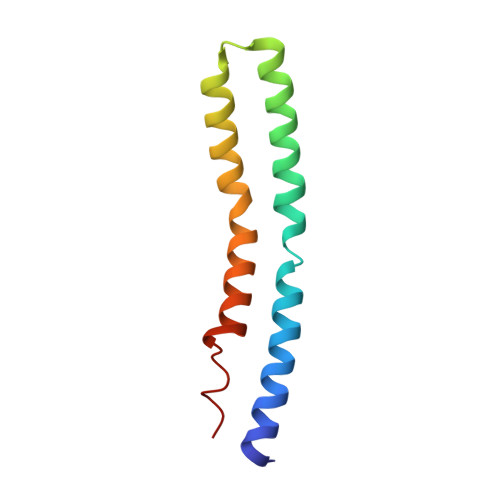Complete Ion-Coordination Structure in the Rotor Ring of Na(+)-Dependent F-ATP Synthases.
Meier, T., Krah, A., Bond, P.J., Pogoryelov, D., Diederichs, K., Faraldo-Gomez, J.D.(2009) J Mol Biol 391: 498
- PubMed: 19500592
- DOI: https://doi.org/10.1016/j.jmb.2009.05.082
- Primary Citation of Related Structures:
2WGM - PubMed Abstract:
The membrane-embedded rotors of Na(+)-dependent F-ATP synthases comprise 11 c-subunits that form a ring, with 11 Na(+) binding sites in between adjacent subunits. Following an updated crystallographic analysis of the c-ring from Ilyobacter tartaricus, we report the complete ion-coordination structure of the Na(+) sites. In addition to the four residues previously identified, there exists a fifth ligand, namely, a buried structural water molecule. This water is itself coordinated by Thr67, which, sequence analysis reveals, is the only residue involved in binding that distinguishes Na(+) synthases from H(+)-ATP synthases known to date. Molecular dynamics simulations and free-energy calculations of the c-ring in a lipid membrane lend clear support to the notion that this fifth ligand is a water molecule, and illustrate its influence on the selectivity of the binding sites. Given the evolutionary ascendancy of sodium over proton bioenergetics, this structure uncovers an ancient strategy for selective ion coupling in ATP synthases.
Organizational Affiliation:
Department of Structural Biology, Max Planck Institute of Biophysics, Frankfurt am Main, Germany. [email protected]
















